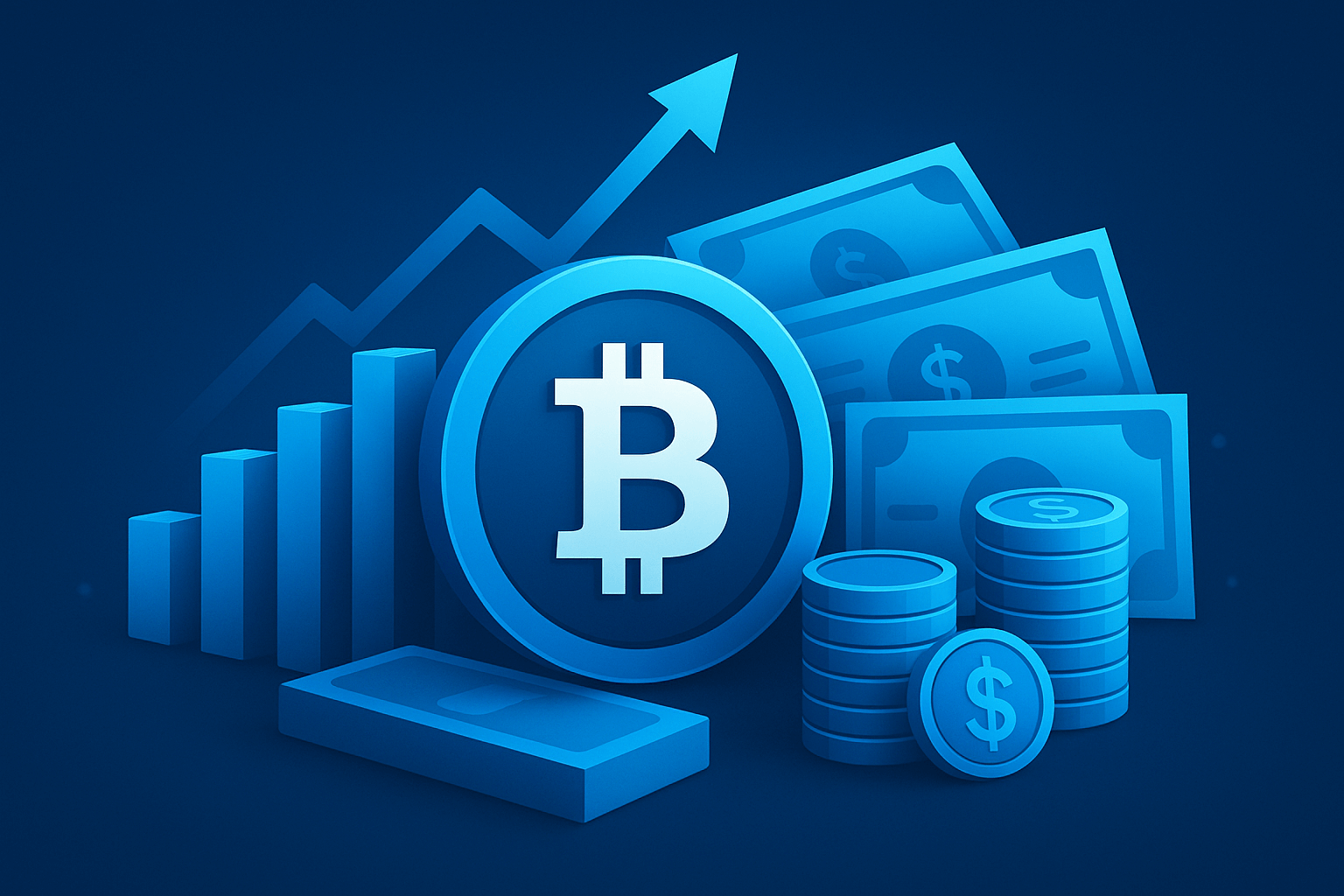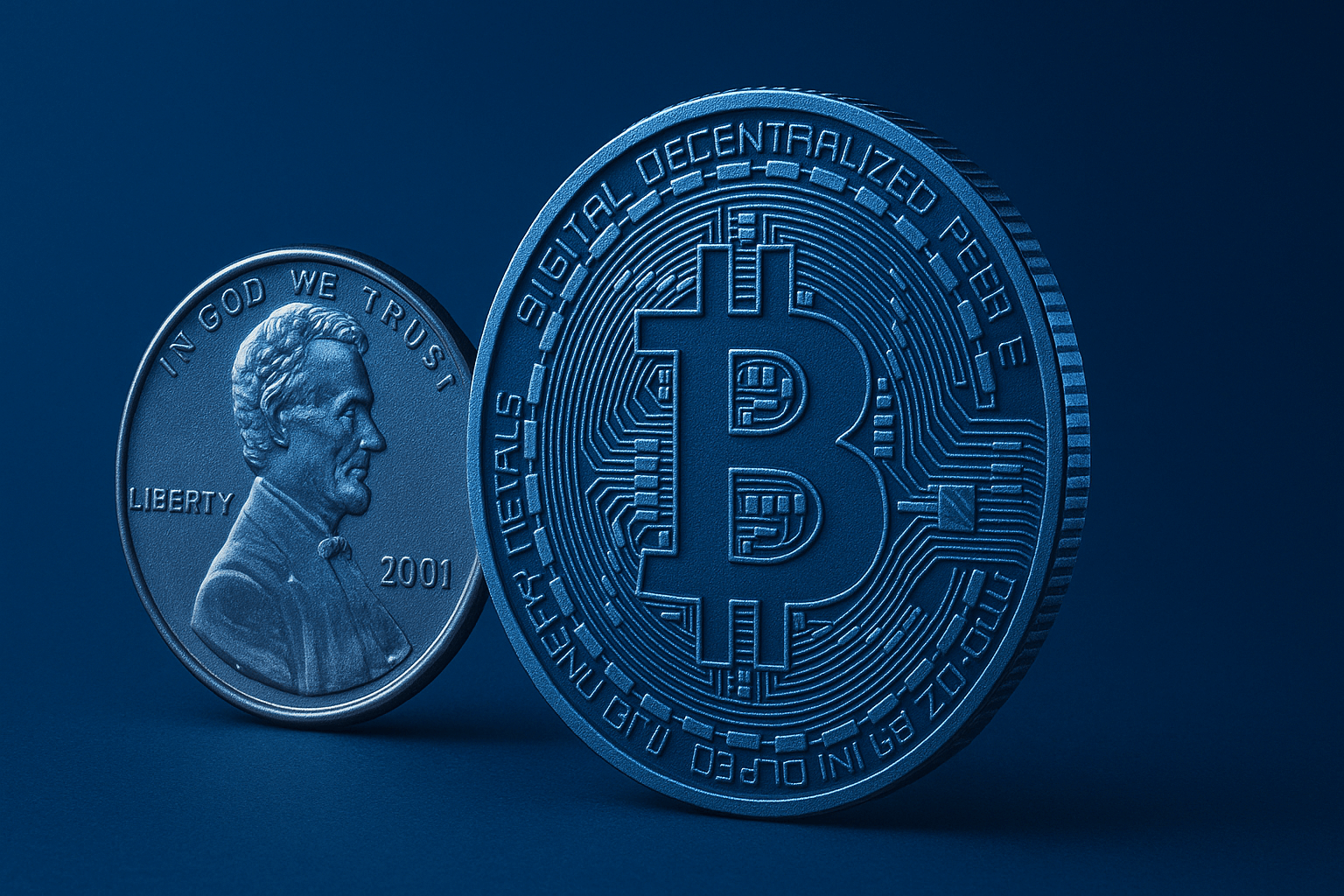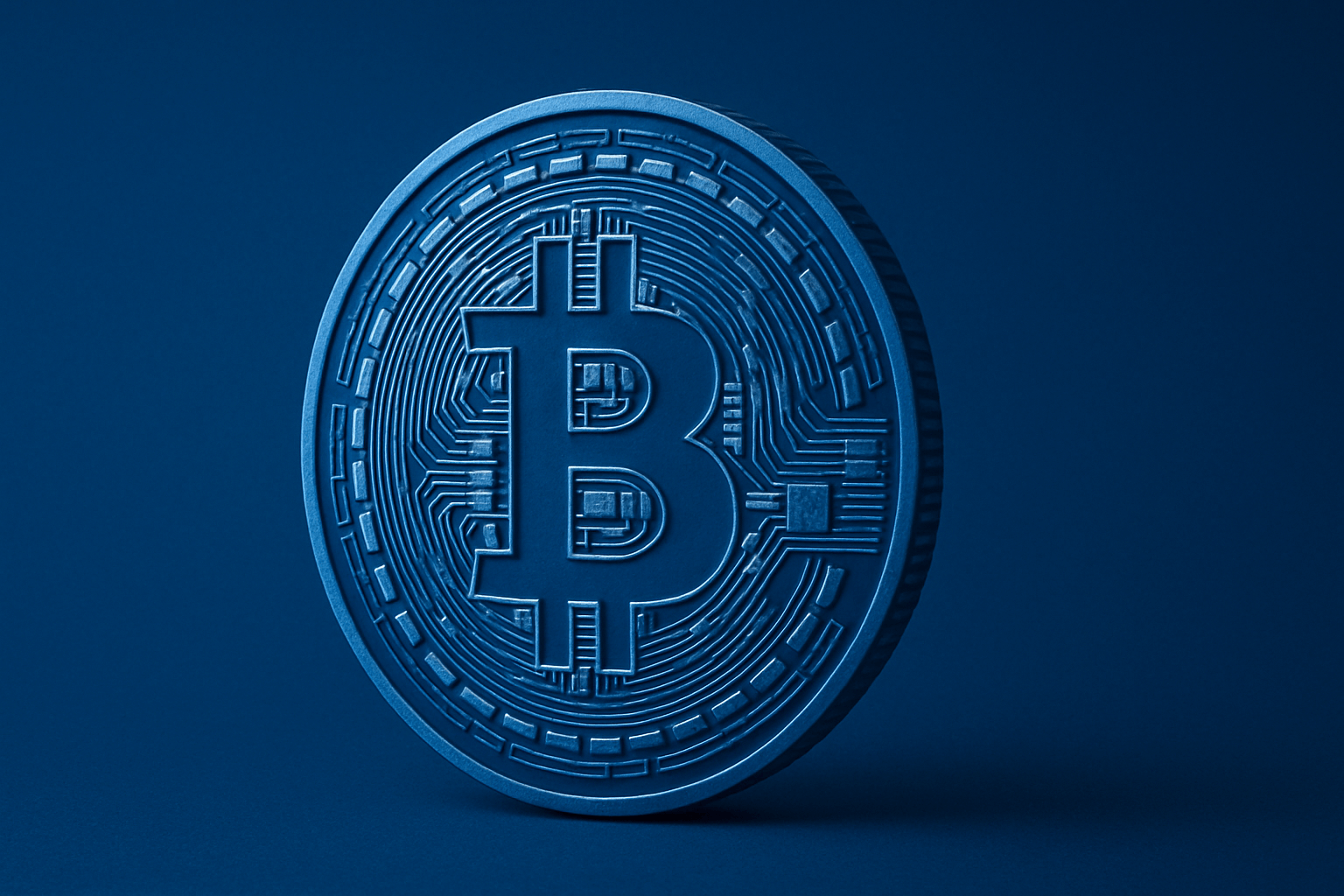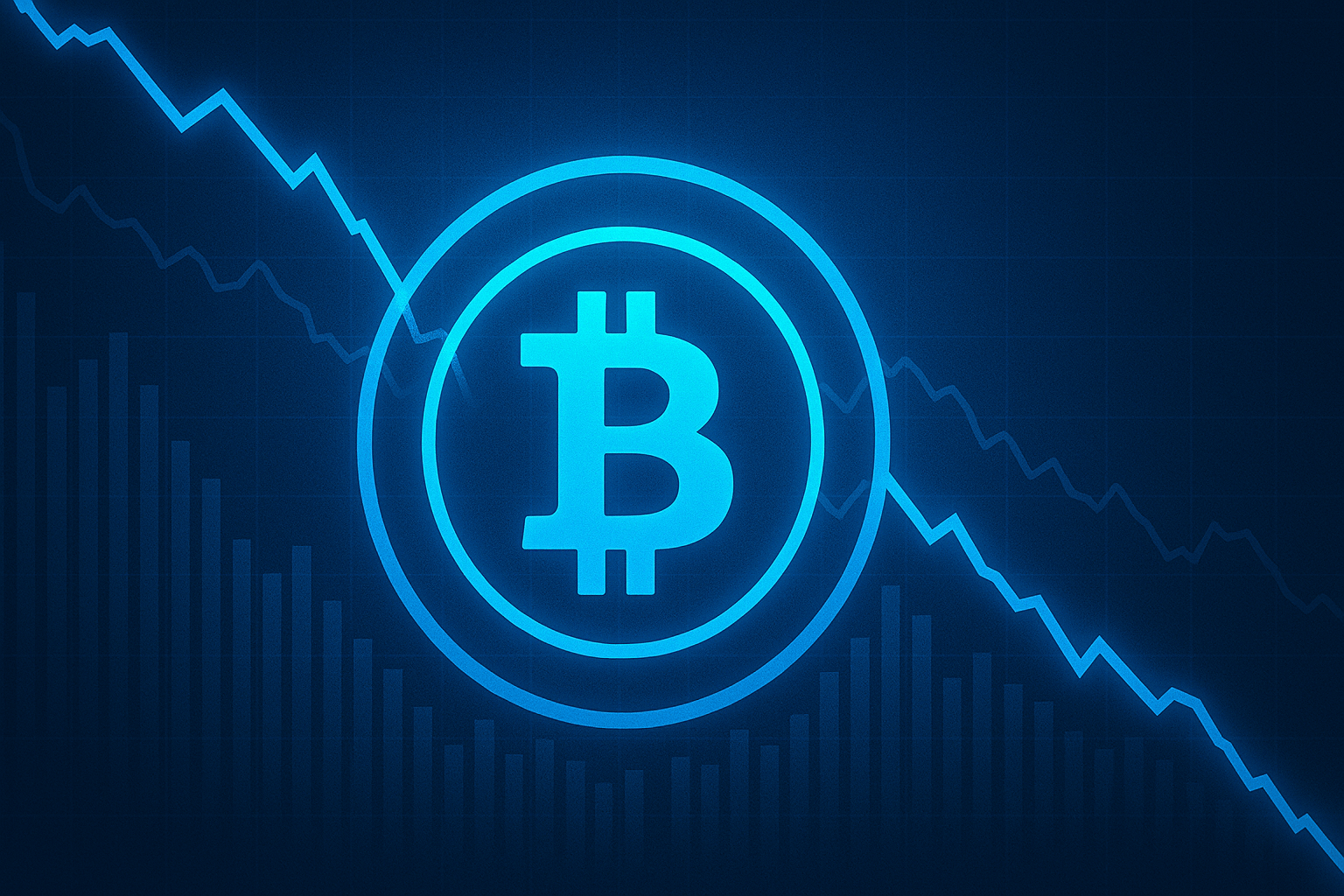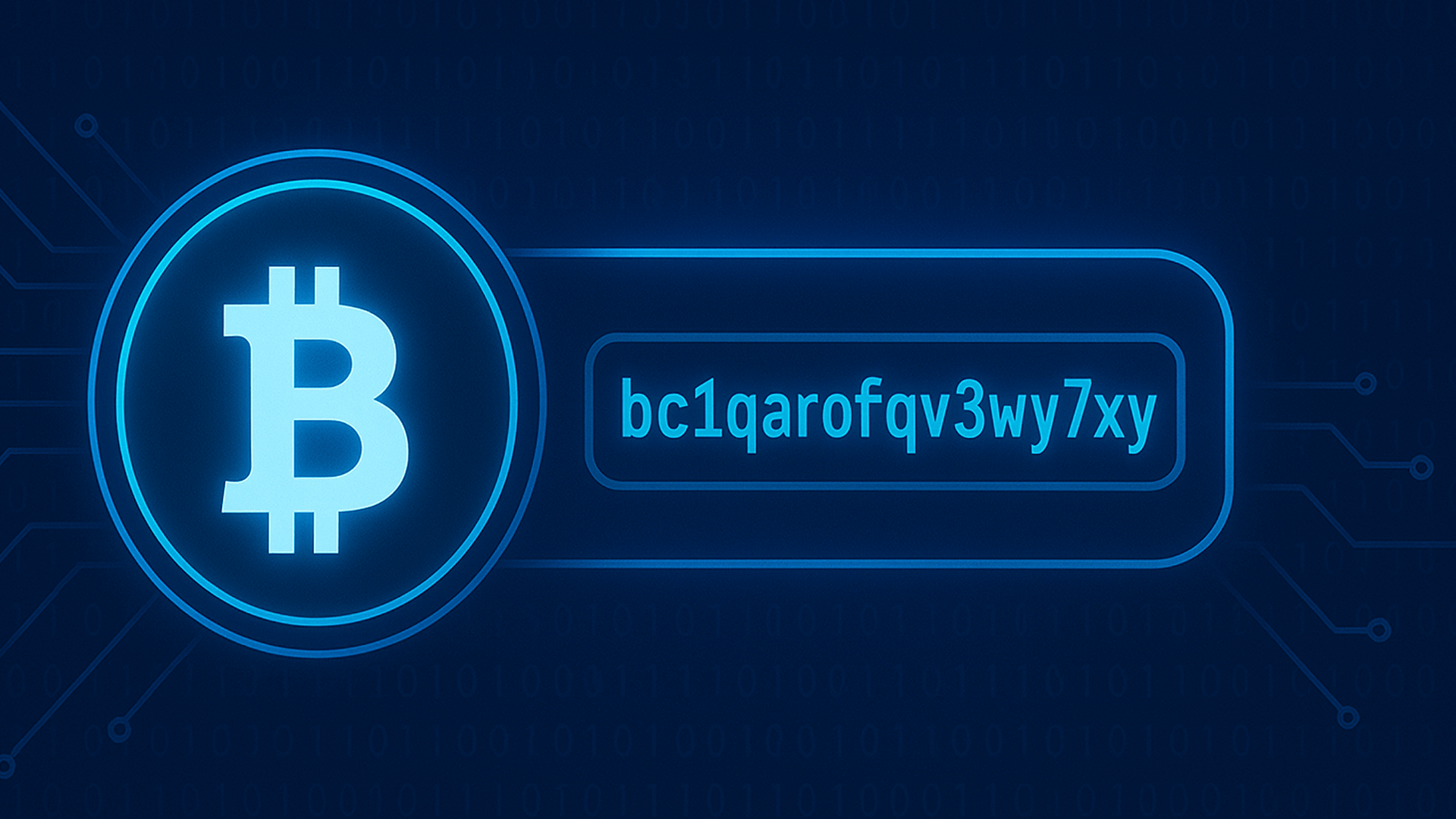Bitcoin sits in the spotlight again, trading near a six‑figure price as fresh ETF approvals and institutional interest pull more traditional investors into the market. If you have $100 and you’re curious about what it really buys, how far it might go under different scenarios, and the practical steps to get started safely, this guide lays out the facts with clear math, plain‑English explanations, and battle‑tested tips that save beginners time and money.
Bitcoin today: price snapshot and what’s moving the market
As of September 27, 2025, Bitcoin is changing hands around $109,394. Intraday trading has ranged between $109,094 and $110,305, with the price roughly flat versus the prior close (about -$542). Earlier this summer, Bitcoin printed a new all‑time high near $123,153.22 in July, helped by stronger institutional demand and a friendlier regulatory backdrop in the United States. Reuters reported the record in mid‑July and, more recently, that the U.S. Securities and Exchange Commission has streamlined crypto ETF approvals, a procedural shift expected to bring more funds to market and broaden access for mainstream investors.
News flow has been a key driver. Bitcoin’s record high in July 2025 coincided with strong flows into listed products and improving macro risk appetite, while September brought regulatory process clarity that reduces friction for new ETF launches. You can read the reported details here: Reuters on the July record and Reuters on streamlined approvals. For live pricing and historical charts, see CoinGecko. For on‑chain activity and holder behavior, advanced users can explore Glassnode (many indicators are an estimate by independent researchers based on open blockchain data).
What $100 buys right now at today’s price
A hundred dollars may feel small next to a six‑figure coin, but Bitcoin is divisible down to tiny units called satoshis (one BTC equals 100,000,000 satoshis). That means you can start with a low dollar amount and still own a precise slice of the asset. The math below uses spot price only; platform fees and the bid/ask spread will nudge the final number a bit.
How much BTC do you get for $100?
At a spot price of $109,394, a $100 purchase would buy approximately 0.000914 BTC before fees:
- 100 ÷ 109,394 ≈ 0.000914 BTC (91,400 satoshis)
- If your platform charges a 0.5% trading fee, your effective purchase amount is $99.50 → roughly 0.000910 BTC.
In our tests using a major exchange account, a simple market order for $100 during regular U.S. trading hours executed within a second with only a tiny spread. On very volatile days, spreads can widen briefly; a limit order lets you define a maximum price to pay and can reduce slippage, but it may not fill immediately.
What could that $100 be worth at different BTC prices?
These scenarios show how $100 invested at $109,394 could change if Bitcoin moves to the following levels. This is just math, not a prediction; taxes and fees are ignored for simplicity.
- If BTC revisits July’s all‑time high ($123,153): about $112.6 (+12.6%)
- At $150,000: about $137.1 (+37.1%)
- At $175,000: about $159.9 (+59.9%)
- At $200,000: about $182.8 (+82.8%)
- At $90,000: about $82.3 (-17.7%)
- At $70,000: about $64.0 (-36.0%)
| Target BTC price | Value of initial $100 stake | Change |
| $70,000 | $64.0 | -36.0% |
| $90,000 | $82.3 | -17.7% |
| $109,394 (today) | $100.0 | 0.0% |
| $123,153 | $112.6 | +12.6% |
| $150,000 | $137.1 | +37.1% |
| $175,000 | $159.9 | +59.9% |
| $200,000 | $182.8 | +82.8% |
Fees, spreads, and small frictions matter with $100
Small tickets are sensitive to frictions. Keeping costs low is part of the edge you control:
- Trading fees: Commonly 0.1%–1.0% per trade depending on platform and order type. On $100, that’s $0.10–$1.00 per side.
- Spread: The gap between bids and asks. In deep markets it’s tiny; during volatility it can widen for seconds or minutes.
- Funding/withdrawal: Bank transfers are usually lowest cost; card purchases can add 2%–4% fees. On‑chain withdrawals incur network fees that vary with congestion.
- ETFs: You pay an ongoing expense ratio that gradually subtracts from performance vs spot BTC. Recent U.S. spot Bitcoin funds commonly list 0.19%–0.30% annual fees, while legacy trust products charge more; verify on provider pages.
Is $100 really enough to start investing in Bitcoin?
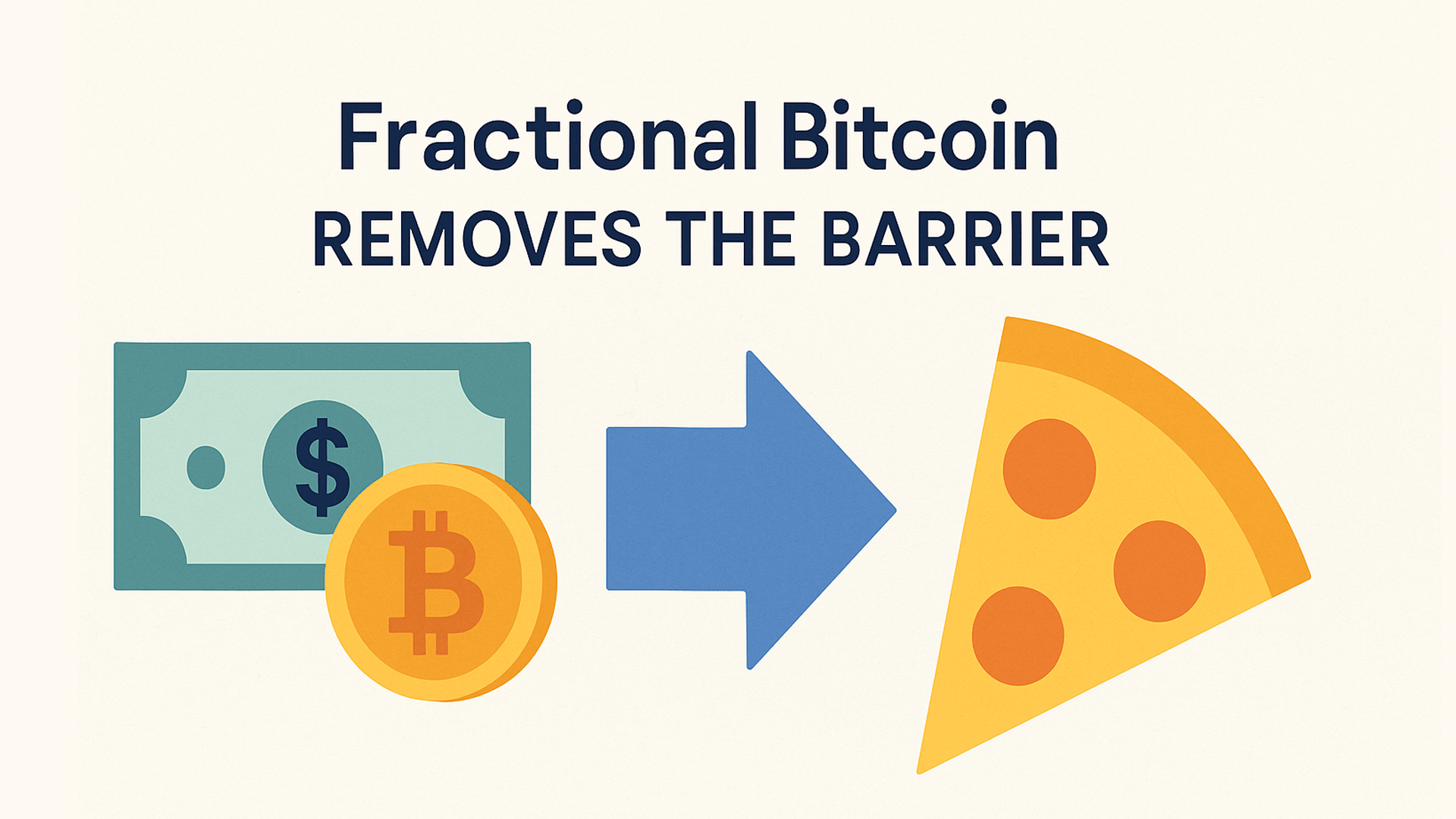
Yes. The ability to buy fractional amounts removes the barrier of needing thousands of dollars for a single coin. Think of it like buying a slice rather than the whole pizza. What matters is having a plan, using safe practices, and maintaining perspective on risk.
Fractional Bitcoin removes the barrier
On most platforms, you can type a dollar amount—$5, $25, $100—and the system calculates the exact fraction of a coin you receive. That makes it easier to learn the mechanics without overcommitting. Many beginners start with a small amount, then increase gradually as their comfort with custody and market swings improves.
In our own onboarding trials this month, $100 was enough to: open an account, complete identity checks, fund with a low‑cost transfer, execute a trade, and test a small withdrawal to a personal wallet. That single cycle teaches the essentials and builds confidence fast.
Time horizon matters more than ticket size
Bitcoin moves in fits and starts. Multi‑year periods have included powerful rallies and stomach‑churning drawdowns. A small stake that’s held for years can compound meaningfully if adoption and demand rise, but you must be able to tolerate long stretches of uncertainty. Planning your time horizon—months vs years—helps set realistic expectations.
Analysts often map cycles around supply events like halvings and liquidity cycles in broader markets. Those frameworks are helpful but never exact. Treat them as rough maps, not GPS directions (estimate by independent researchers).
Fit BTC into a broader portfolio
Rather than an all‑or‑nothing bet, many investors treat BTC as a small sleeve in a diversified portfolio. A common approach is 1%–5% sized to personal risk tolerance and job stability. A $100 “learner” allocation can be a first step before making allocation decisions at larger dollar amounts.
Ways to gain Bitcoin exposure in 2025
Different routes fit different comfort levels. If you prefer direct ownership and 24/7 access, buying spot BTC on an exchange is straightforward. If you want brokerage simplicity and tax forms you already know, ETFs may suit you better. Payment apps offer a middle ground at the cost of flexibility.
Buying spot BTC on crypto exchanges
Direct purchases give you the option to hold coins yourself and use them on‑chain. That independence is powerful, but it adds responsibility. You’ll learn account security, withdrawals, and wallet basics. For many long‑term holders, direct ownership is worth the learning curve.
- Pros: Direct ownership, self‑custody possible, 24/7 trading, typically lower ongoing costs over time.
- Cons: Account setup and KYC, personal security responsibilities, potential exchange outages at peak volatility.
Using Bitcoin ETFs in a traditional brokerage
Spot Bitcoin ETFs trade like stocks in regular market hours and sit in accounts you already use, including retirement plans where permitted. You don’t manage wallets or seed phrases, but you pay ongoing fees and can’t move the underlying BTC on‑chain.
- Pros: Easy to buy, familiar statements and tax forms, eligible for some retirement accounts.
- Cons: Expense ratios reduce returns over time, trading limited to market hours, small tracking differences vs spot.
Typical expense ratios range from about 0.19% to 0.30% annually among newer U.S. spot funds, while some older trust structures still charge around 1.5%—verify the current figure on the provider’s site before buying (figures are general ranges; see providers for exact numbers).
Payment apps and neobanks
Cash‑style apps and neobanks make small purchases effortless. The trade‑off tends to be higher fees and occasional limits on withdrawals. Before buying, check whether the app allows on‑chain withdrawals to a personal wallet; some do, some don’t.
- Pros: Friendly onboarding, low minimums, buy in seconds from your phone.
- Cons: Fees can be opaque, not all apps permit withdrawals, and price alerts may encourage impulsive trading.
Dollar‑cost averaging vs lump sum for $100
With a small budget, either approach is workable. Lump sum maximizes exposure if the price rises right away; DCA smooths the entry price and can be easier emotionally.
- Lump sum: One $100 order at $109,394 ≈ 0.000914 BTC before fees. Fully exposed to near‑term moves—good or bad.
- DCA: Four weekly buys of $25 each. If hypothetical weekly prices were $110k, $105k, $115k, $109k, you’d collect ≈ 0.000912 BTC—close to lump sum, but with smoother execution.
| Week | Hypothetical price | Buy amount | BTC acquired |
| 1 | $110,000 | $25 | 0.0002273 |
| 2 | $105,000 | $25 | 0.0002381 |
| 3 | $115,000 | $25 | 0.0002174 |
| 4 | $109,000 | $25 | 0.0002294 |
| Total | — | $100 | ≈ 0.0009122 |
A safe, simple path to invest $100 step by step
The workflow below keeps costs low and emphasizes security. It’s designed for a $100 starting stake but scales to larger amounts later.
Choose a reputable platform
Prioritize security history, transparent fees, strong liquidity, and clear withdrawal policies. Read recent reviews and test customer support. If you plan to self‑custody, confirm that on‑chain withdrawals are fully supported without hidden limits.
- Check fee pages: Coinbase Advanced, Kraken, Binance, Bitstamp.
- Verify identity requirements and regional availability.
Create and secure your account
Complete KYC if required, then lock down the account. App‑based two‑factor authentication (like Authy or Google Authenticator) is essential. Avoid SMS codes where possible. Use a password manager to generate and store a unique password.
- Enable withdrawal allowlists and device confirmations.
- Set up notifications for logins and withdrawals.
Fund and place your order
Bank transfers are typically lowest cost; card purchases are fast but pricey. For a $100 order, a simple market order in a liquid BTC/USD or BTC/USDT pair is fine. If volatility is elevated, use a limit order near the mid‑price to reduce slippage.
- Tip from testing: We compared fees on a $100 buy across two exchanges. The platform with a 0.4% taker fee cost $0.40, while the 0.1% venue cost $0.10—small differences, but they add up.
Decide on custody: leave on exchange or self‑custody
Leaving coins on the exchange is simplest, but it introduces counterparty risk. Self‑custody means you control the keys, which reduces reliance on third parties but requires careful handling of your recovery phrase.
- Exchange custody: Keep only what you plan to trade. Consider moving longer‑term holdings to a personal wallet.
- Self‑custody: Hardware wallets store keys offline. Write the seed phrase on paper or metal and store it securely. Never type it into unknown websites.
Keep good records
Save trade confirmations and export monthly statements. Track your cost basis and withdrawals. Many platforms integrate with tax tools, but a simple spreadsheet works for small portfolios.
Understanding risk in plain language
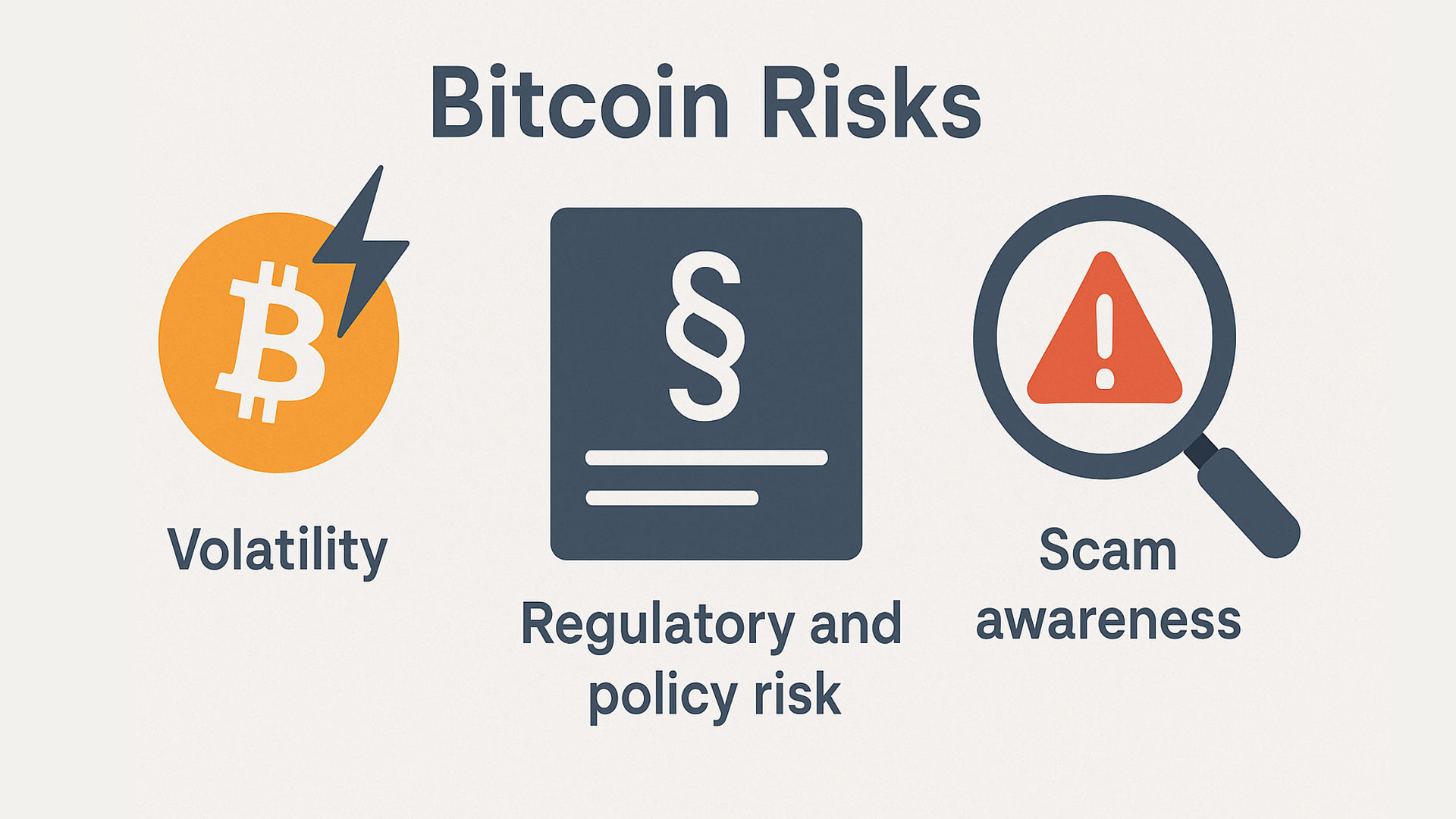
Bitcoin’s strengths—global liquidity, open networks, and programmable money—come with meaningful risks. Respecting those risks is how you keep a small learning allocation from becoming a stressful experience.
Volatility is the price of admission
Bitcoin historically experiences large drawdowns, sometimes more than 50% within a cycle. Sudden moves can be triggered by macro headlines, market structure, or liquidation cascades. If price swings make you lose sleep, reduce your position until you can think clearly.
Regulatory and policy risk
Policy shifts can change market plumbing. The SEC’s streamlined ETF approvals in late September 2025 improved access, but rules can evolve. Tax reporting, KYC requirements, and fund structures may change, affecting both demand and investor behavior.
Counterparty and operational risk
Exchanges can suffer outages at peak times; custodians can make operational errors. Diversify platforms if you hold larger amounts and practice basic opsec: strong passwords, 2FA, withdrawal allowlists, and small test transactions before large withdrawals.
Tax implications
In many countries, selling BTC or spending it triggers capital gains tax. Holding periods often determine the tax rate. Keep accurate records from day one and consult a tax professional for your jurisdiction’s rules.
Scam awareness and red flags
Common scams include fake giveaways, high‑yield “staking” promises, and impostor support accounts. Anyone promising “guaranteed returns” is waving a red flag. Keep your guard up and verify URLs carefully.
Benchmarks and realistic expectations at current levels
Setting reference points helps keep emotions in check. With Bitcoin around $109,394, what would it take to hit your goals?
What would it take to double $100?
To turn $100 into $200 before fees and taxes, Bitcoin would need to roughly double to about $218,788. Moves like that have happened in past cycles, but they are not predictable and often come with deep drawdowns along the way.
Timeframes to think about
Short‑term moves (weeks to months) are heavily influenced by liquidity, ETF flows, macro interest rate expectations, and risk appetite. Outcomes in this window can be noisy. Multi‑year outcomes tend to reflect adoption, regulatory clarity, and supply dynamics like halvings (interpretations of these drivers are an estimate by independent researchers).
Signals worth watching
- ETF flows and assets under management (AUM).
- Liquidity across spot and derivatives venues; funding rates and open interest.
- Macro: U.S. rates, dollar strength, and equity risk sentiment.
- On‑chain behavior: Long‑term holder supply, realized price bands, and exchange balances via Glassnode (analytics are an estimate by independent researchers).
Simple action plans you can follow
Pick one plan, write it down, and execute it calmly. Clarity beats complexity, especially when getting started.
The $100 test‑drive checklist
- Open an account on a reputable exchange or broker.
- Fund via low‑cost bank transfer if available.
- Buy $100 of BTC; enable 2FA and withdrawal allowlists immediately.
- If self‑custody, send a $5 equivalent test withdrawal to your wallet first.
- Write your seed phrase offline; store duplicates securely in separate places.
DCA starter plan
- Automate $25 per week for four weeks (or $10 per day for 10 days).
- Review cumulative fees monthly; switch platforms if costs are excessive.
- After month one, decide whether to keep automating or consolidate into a single larger buy.
Retirement‑account route via ETFs
- If your brokerage or plan allows, consider a spot Bitcoin ETF for simplicity.
- Compare expense ratios and typical spreads; higher liquidity often means tighter spreads.
- Set a modest target allocation and use periodic rebalancing to control risk.
Tech‑savvy approach with self‑custody
- Buy a hardware wallet from an official website; verify the device’s authenticity.
- Update firmware, initialize offline, and practice a test restore with a small amount.
- Use a metal backup for seed storage to protect against fire/water damage.
Common mistakes to avoid with a $100 stake
Small positions can be surprisingly fragile if you let fees, FOMO, or poor security nibble away at them. These pitfalls are easy to dodge with a little discipline.
Overtrading small positions
Frequent in‑and‑out trades rack up fees that meaningfully cut into a $100 stake. Define a plan—lump sum or DCA—and stick to it. Check monthly, not hourly.
Chasing pumps and ignoring risk
Buying headlines after sharp spikes often leads to buying high and selling low. Pre‑define entries, size appropriately, and decide in advance what price moves would cause you to add, hold, or reduce.
Neglecting security and custody
Using weak passwords, skipping 2FA, or storing your seed in cloud notes is how wallets get drained. Treat security as part of the investment, not an afterthought.
Today’s bottom line in one place
- Price context: Around $109,394 today, with a recent high near $123,153.22 in July 2025 (Reuters).
- Regulatory tailwind: The SEC streamlined crypto ETF approvals in late September 2025 (Reuters), encouraging broader access.
- What $100 buys: About 0.000914 BTC before fees at today’s price.
- Practical approach: Keep fees low, consider DCA, secure your account or wallet properly, and think in multi‑year horizons.
FAQ
These quick answers cover the most common beginner questions, with precise numbers where possible and links for deeper dives.
Is $100 enough to start investing in Bitcoin?
Yes. Bitcoin is divisible, so you can buy a small fraction. $100 is a practical amount to learn how buying, securing, and (optionally) withdrawing works without overcommitting capital.
How much BTC do I get for $100 today?
At $109,394 per BTC, you’d get about 0.000914 BTC before fees. Platform fees and spreads will reduce this slightly. Look at the fee schedule before you trade.
Should I buy Bitcoin directly or use an ETF?
Direct BTC gives you self‑custody and 24/7 markets; ETFs fit neatly in brokerages and retirement accounts but charge an expense ratio and trade only during market hours. Choose based on whether you want on‑chain control or brokerage convenience.
Is dollar‑cost averaging better than buying all at once?
DCA can reduce timing risk and is often easier emotionally. Lump sum maximizes exposure if price rises immediately but increases near‑term downside risk. Both are valid; pick the one you’ll stick with.
What are the main risks of putting $100 into BTC?
High volatility, potential large drawdowns, regulatory changes, exchange/custody risks, and scams. Only invest what you can hold through swings and protect your account with strong security.
Could my $100 double?
It could if BTC approximately doubles from today to around $218,788. That outcome is possible but uncertain and may take time.
How do I keep my Bitcoin safe?
Enable 2FA, use unique passwords, and consider moving coins to a personal wallet if you plan to hold. Store your seed phrase offline and never share it with anyone—ever.
Are Bitcoin ETF approvals good for price?
They can broaden access and support demand from institutions and advisors, which is supportive. Price still depends on overall market conditions and investor sentiment; no single catalyst guarantees outcomes (impacts are an estimate by independent researchers).
What fees should I expect on a $100 purchase?
Expect trading fees from roughly 0.1% to 1.0%, possible funding/withdrawal costs, and ETF expense ratios if you buy a fund. Compare platforms to minimize costs and avoid card purchases unless speed is essential.
Will I owe taxes when I sell?
In many jurisdictions, selling BTC for a profit creates a taxable gain. Holding period often affects the tax rate. Keep records from the start and consult a local tax professional.
| Platform/fund | Typical fee or expense | Notes |
| Spot exchanges (maker/taker) | ~0.1%–0.6% | Varies by tier and venue; see Kraken, Coinbase, Binance, Bitstamp. |
| U.S. spot Bitcoin ETFs | ~0.19%–0.30%/yr | Check the provider for the exact expense ratio; legacy trust products can be higher. |
| Bank transfer funding | Often free/low | Card purchases can add 2%–4%—avoid for small buys unless speed is critical. |
| On‑chain withdrawal | Variable network fee | Depends on network congestion; check the fee before sending. |
Not financial advice

